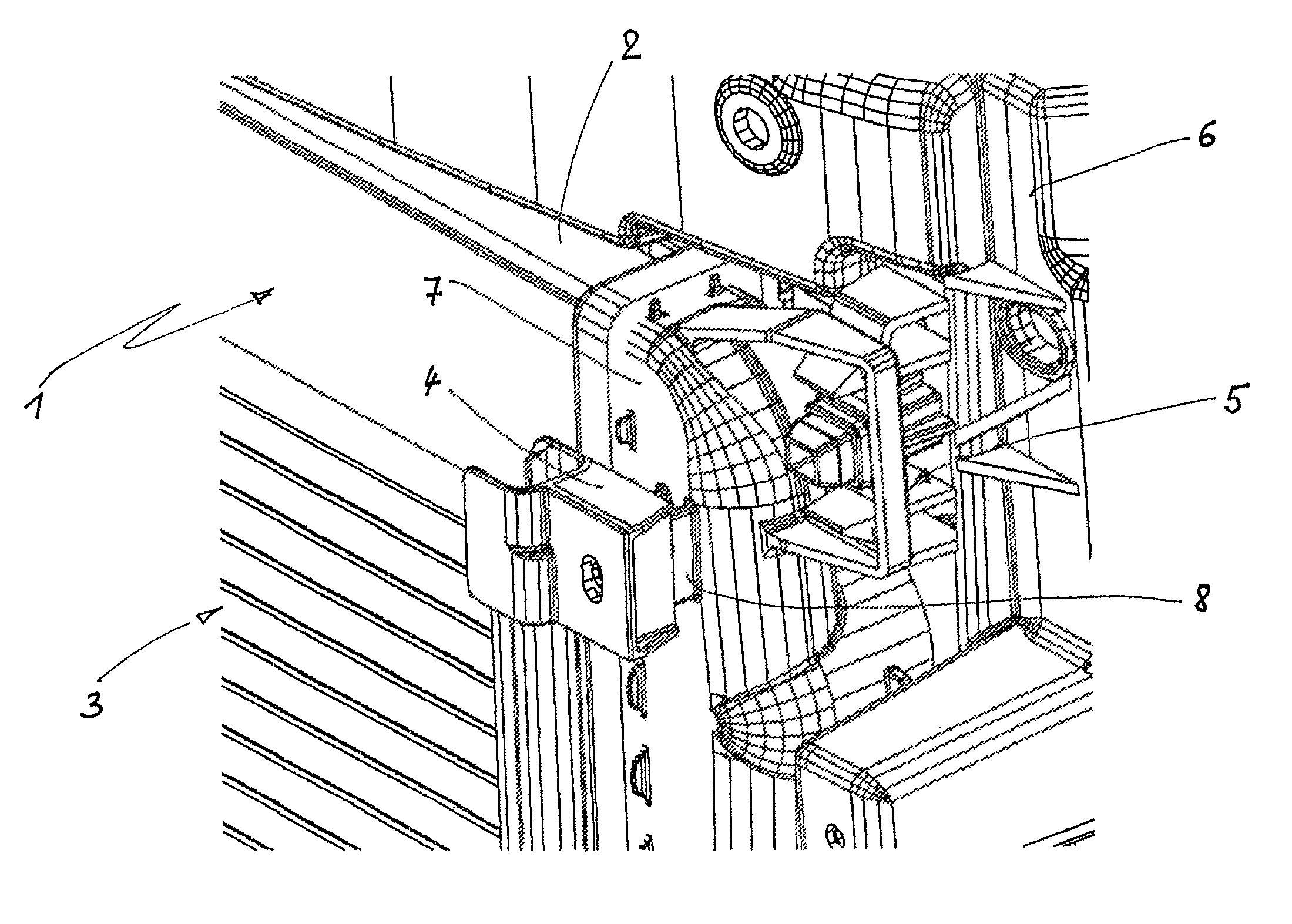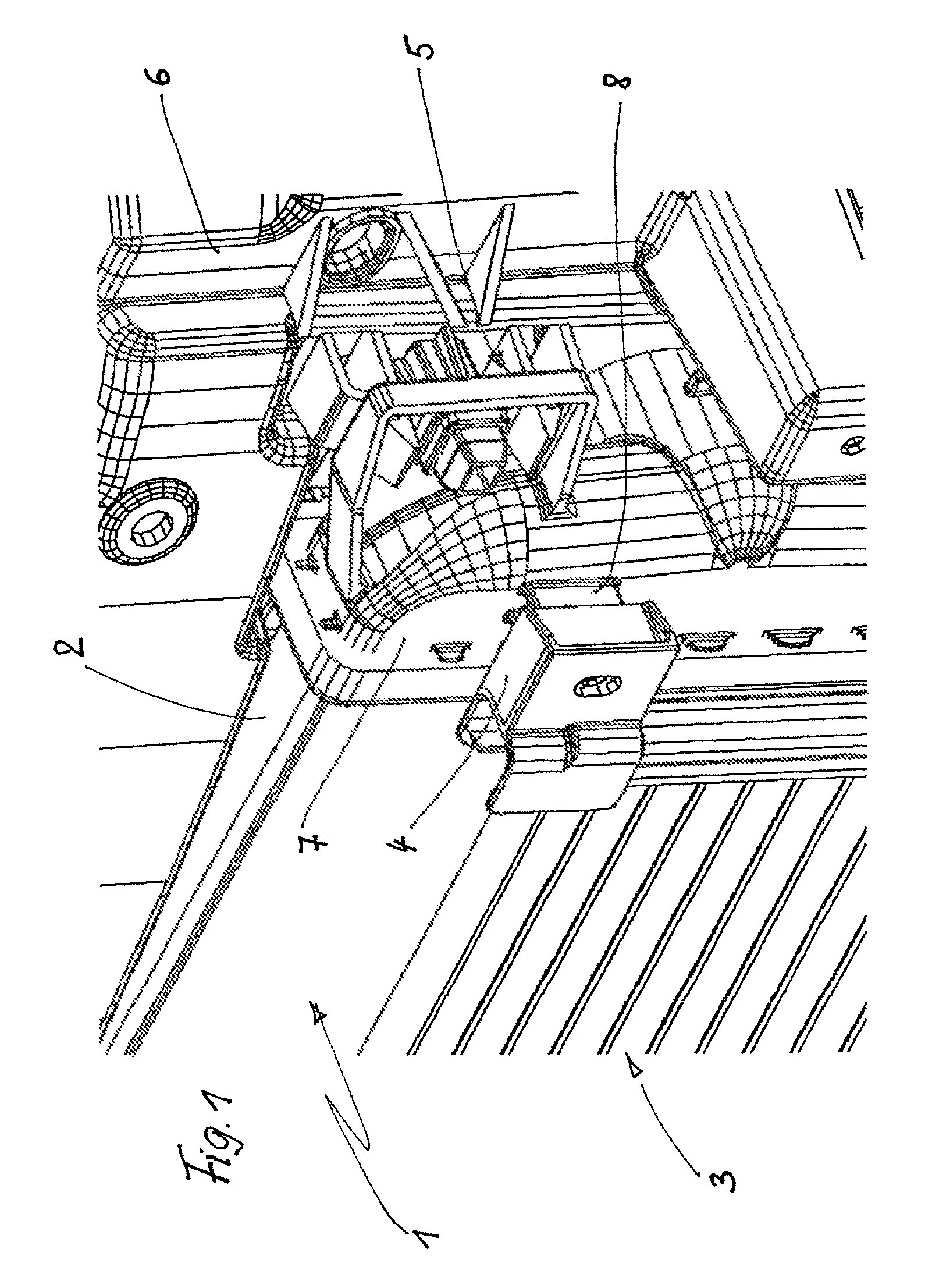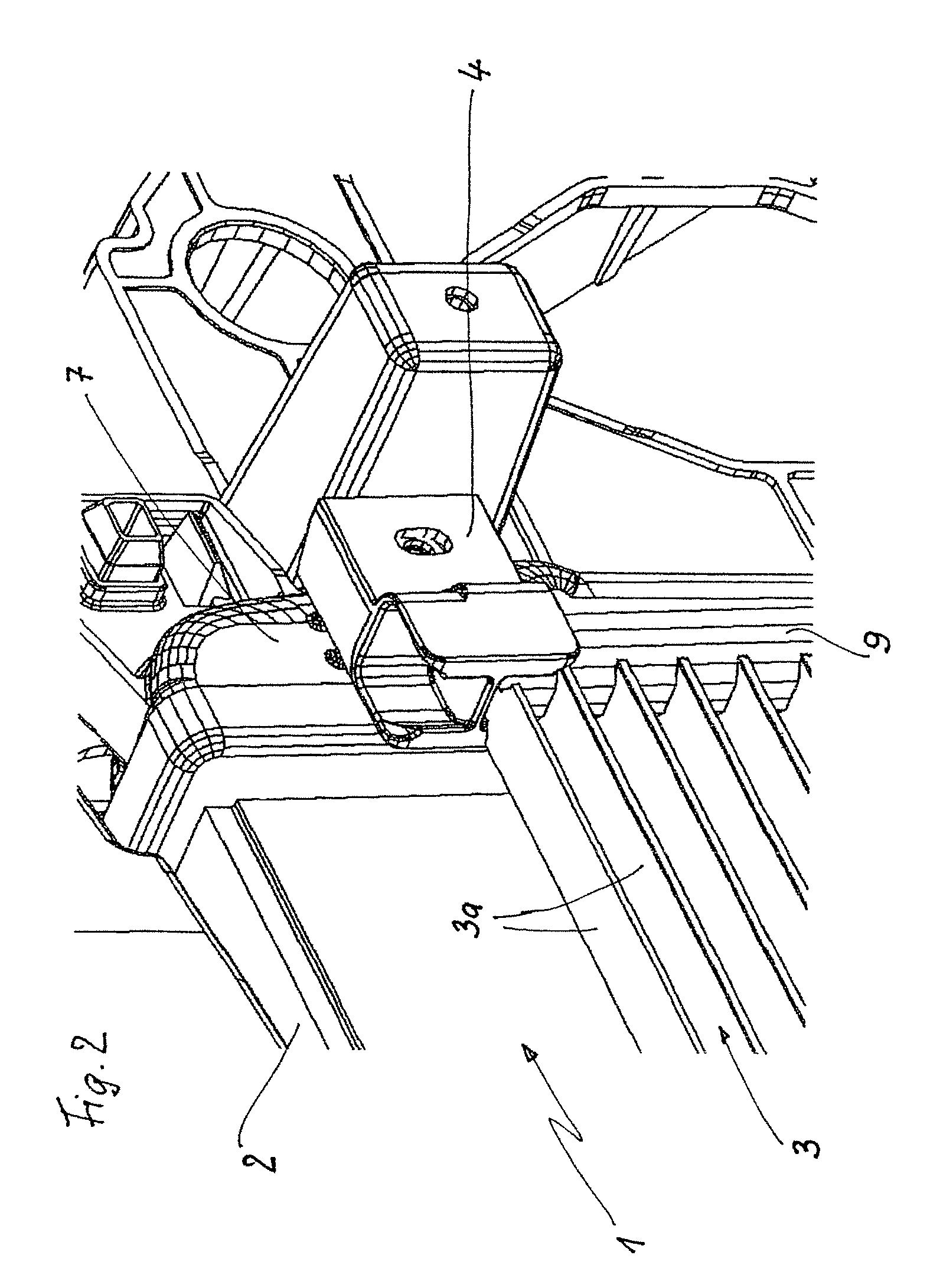Fastening and joining element for heat exchangers, and heat exchanger assembly in a motor vehicle
a technology of fastening and joining elements and heat exchangers, which is applied in the direction of heat exchanger casings, stationary conduit assemblies, lighting and heating apparatus, etc., can solve the problems of heat exchangers that cannot be adapted specifically, heat exchanger fastening, soldering, etc., and achieves a low production cost and easy assembly. , the effect of reducing the production cos
- Summary
- Abstract
- Description
- Claims
- Application Information
AI Technical Summary
Benefits of technology
Problems solved by technology
Method used
Image
Examples
Embodiment Construction
[0023]FIG. 1 shows a detail of a cooling module 1 in an isometric illustration. The cooling module 1 is composed of a mechanically produced coolant cooler 2 and a soldered condenser of fully-aluminum design. The two heat exchangers 2, 3 are connected to one another by means of a fastening and connecting element 4, while the coolant cooler 2, referred to below for short as the cooler 2, is connected to a module or assembly carrier 6 by means of a latching connection 5 which is not explained in any more detail. The cooler 2 is therefore the carrier for the condenser 3, while the module carrier 6 is the carrier for the entire cooling module with respect to a motor vehicle (not illustrated). Instead of the module carrier 6, it is likewise possible for an assembly carrier of a front module (not illustrated) to be the carrier of the cooling module 1. The cooler 2 has a coolant tank 7 composed of plastic, on the longitudinal side, which faces toward the condenser 3, of which a screw dome 8...
PUM
 Login to View More
Login to View More Abstract
Description
Claims
Application Information
 Login to View More
Login to View More - R&D
- Intellectual Property
- Life Sciences
- Materials
- Tech Scout
- Unparalleled Data Quality
- Higher Quality Content
- 60% Fewer Hallucinations
Browse by: Latest US Patents, China's latest patents, Technical Efficacy Thesaurus, Application Domain, Technology Topic, Popular Technical Reports.
© 2025 PatSnap. All rights reserved.Legal|Privacy policy|Modern Slavery Act Transparency Statement|Sitemap|About US| Contact US: help@patsnap.com



